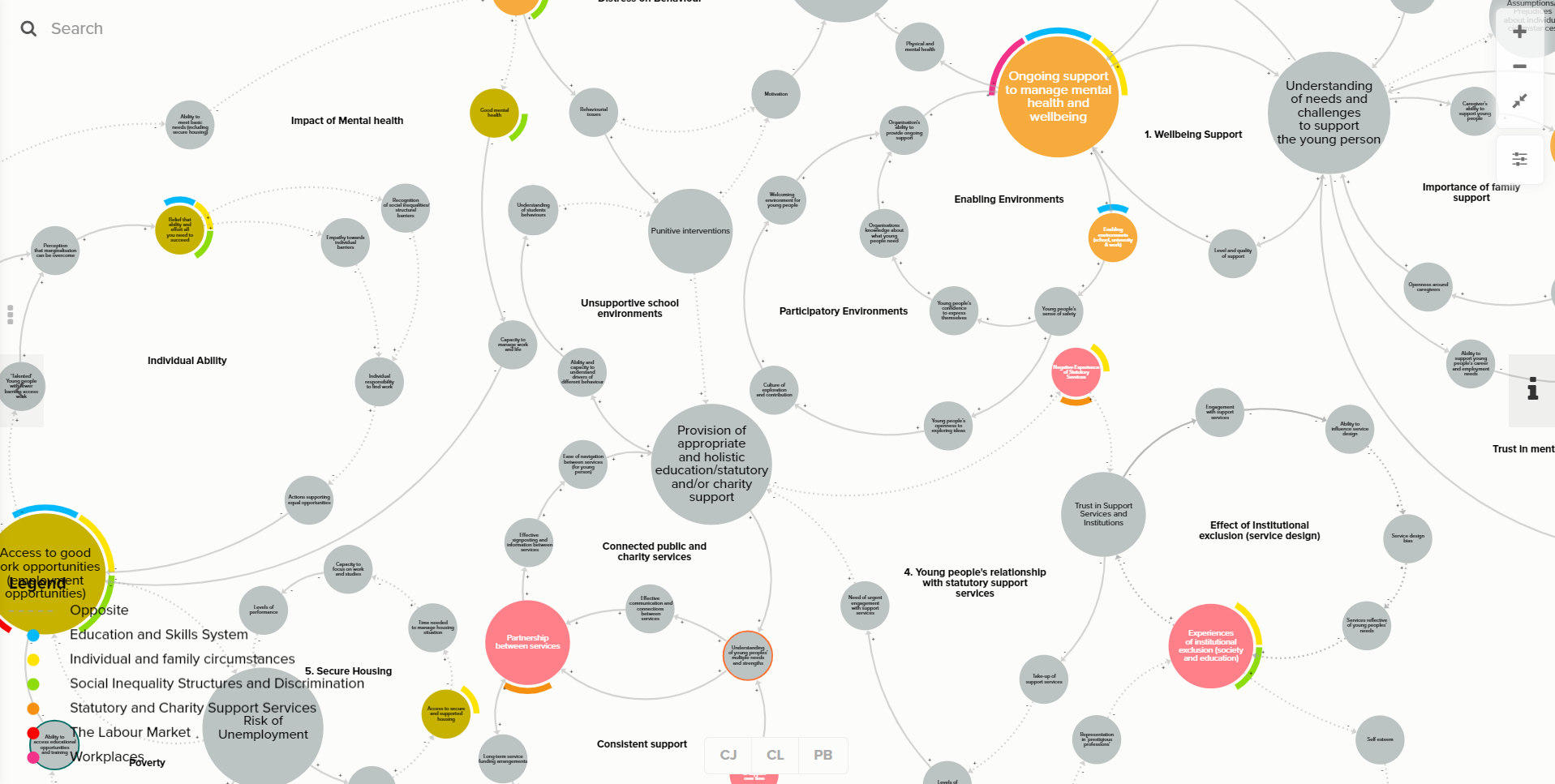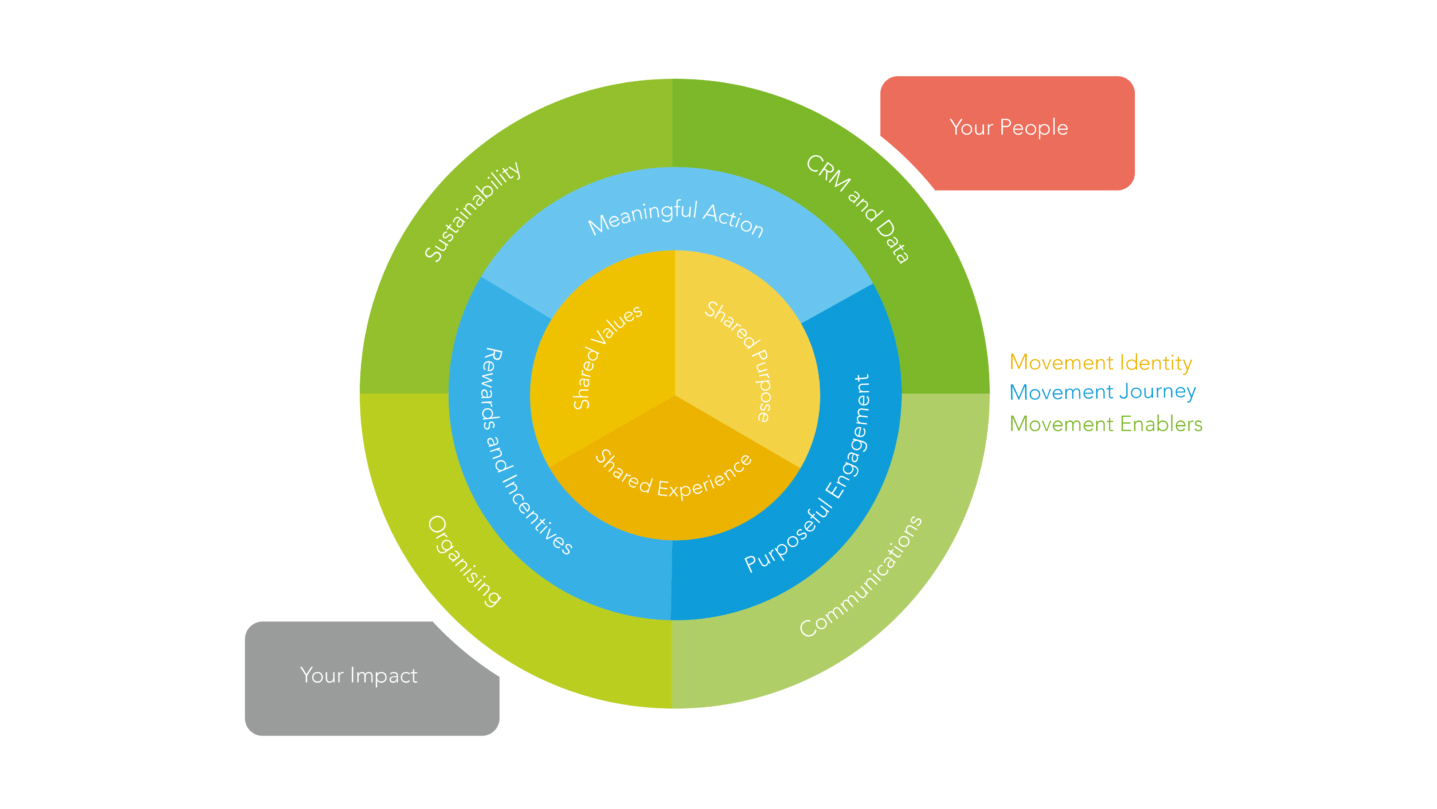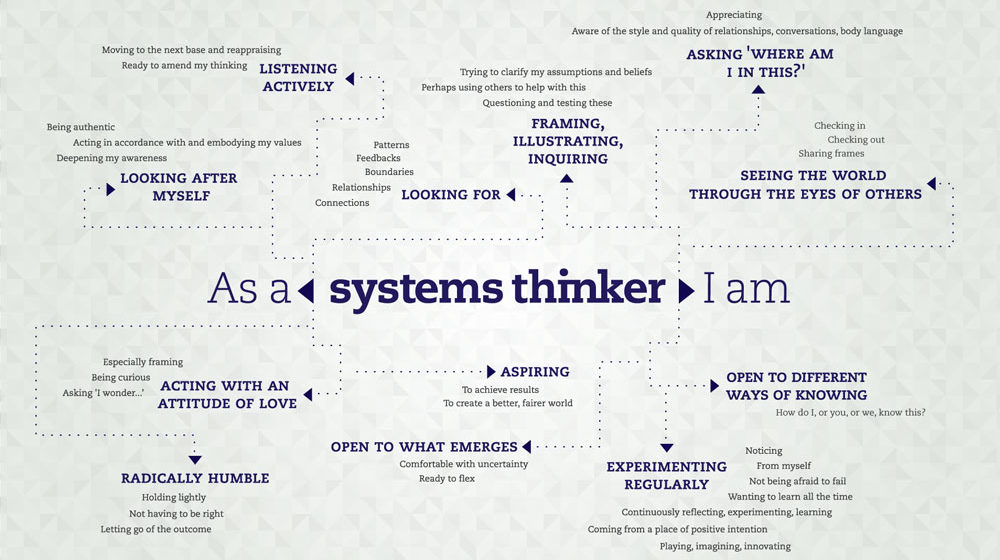Building a systems map to understand the barriers to good work for young marginalised people

The brief
The employment system doesn’t work for many marginalised young people. Thousands of people struggle to find good work opportunities every year, and specific groups consistently face worse outcomes than others.
In order to create a youth employment system that produces decent and equitable work for young people, you first need to understand the system and how it works. That’s why in April 2021, we joined forces with the Youth Futures Foundation, to gather insights from young people and system stakeholders, and visualise them into a ‘systems map’.
The map aimed to create a clearer picture of the youth employment system, and provide information to help Youth Futures Foundation identify areas of strategic priority and investment.
What is systems thinking?
Systems Thinking is about addressing and understanding social issues by exploring their root causes and impact. It is also about changing how we understand and attempt to address these issues.
A systems map is a visual way of illustrating a system. It provides a simplified understanding of a complex system, so individuals and organisations with different perspectives can form a common understanding and start to identify the factors which underpin the system and where they can have the most impact. System maps are living things, and should be updated over time to reflect changes in the system.
Our approach
We took a participatory approach to developing the systems map for youth employment, engaging multiple sets of stakeholders throughout the project. It was essential that the map was developed with the experience of young people at its core. To do this, we were supported by the Future Voices Group – Young Futures Foundation’s strategic steering group of young people.
In addition to the support from the steering group, we held two sets of focus groups with young people with common experiences of marginalisation in the system. These groups were identified through understanding of the available data, and prioritised with support from the Future Voices Group. The focus groups consisted of people with experience of the care system, experience of the criminal justice system, and people with Bangladeshi or Pakistani heritage.
We also worked with over 40 stakeholders with a range of expertise and perspectives, including funders, local and national policymakers, think-tanks, employers and practitioners.
The results
The map we produced together identifies enabling and inhibiting forces to youth employment and analyses key themes and their relationship to one another.
It is now being used by Youth Futures Foundation to understand the most important parts of the journey through the system for young people, and reflect on where they should prioritise their strategy and resources.
For a more detailed account of this work check out this post from Youth Futures Foundations.
Interested in exploring the complex factors underpinning your area of work?
Do you want to know where you should focus your resources for maximum impact?
Get in touch to find out more about our systems mapping support
Want to learn more about Systems Thinking? Join our upcoming training session








